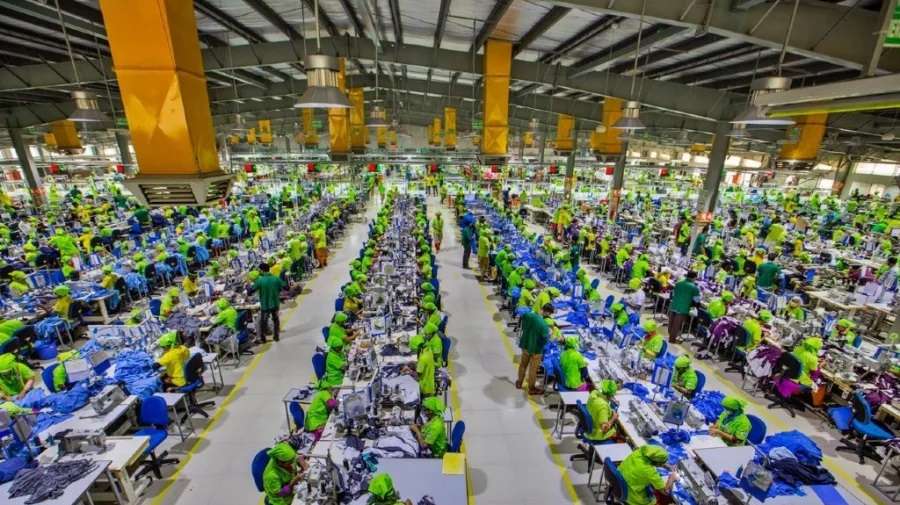Vietnam is a member of the TPP and China is not. To counter the adverse impact of the treaty, Chinese textile groups are investing in Vietnam in a big way. Execution of the TPP will pose new challenges to China's textile and apparel enterprises, so companies are building their Vietnam operations with respect to the cost advantages. Even without the TPP, the competitiveness of Vietnamese operations is strong among all Southeast Asian nations and even compared to Chinese production bases. Vietnamese production has several advantages for Chinese companies besides the TPP.
One is relatively favorable trade relations with the world vis-a-vis China. Even before the TPP, tariffs on yarns exported from Vietnam to Japan, South Korea and Europe were lower compared with exporting them from Chinese factories. Production costs are another advantage. Compared to China, labor, electricity and other costs are lower in Vietnam.
Texhong, one of the world's largest yarn suppliers, has been aggressively building up yarn production capabilities in Vietnam. Upon completion, the company's yarn production in Vietnam is expected to become almost on par with its Chinese operation. Manufacturing is going downstream beyond yarn. Production equipment with an annual capacity of 60 million meters of gray fabric, 40 million meters of woven dyed fabric, and seven million pieces of garments will be installed by around November and begin full operation early next year.
China invests in Vietnam’s textiles sector to take advantage of TPP
- 1
- 2
- 3
- 4
- 5
- 6
- 7
- 8
- 9
- 10
EU's T-shirt market: Steady consumption, rising imports shows changing dynamics
The European Union's appetite for T-shirts remains robust, with consumption expected to grow steadily over the next decade, albeit at... Read more
China's neo-luxury era redefines consumer aspirations
As China's affluent consumers mature, a there is a shift in the luxury market. The days of conspicuous consumption and... Read more
Next Big Opportunity for Indian Textile &Apparel: Strategic focus on key pro…
A compelling analysis by Sanjay K Jain, Chairman of the ICC National Textile Committee at the Indian Chamber of Commerce,... Read more
Local brands challenge global titans amid evolving consumer demand in China’s sp…
China has consolidated its position as a powerhouse in the global sportswear market, driven by a growing middle class, increasing... Read more
Impact of reciprocal tariffs and how it’s reshaping global textile supply chains
The announcement of reciprocal tariffs by the US, even with the 90-day pause on those excluding China, has triggered a... Read more
Global Sourcing Expo 2025 to strengthen India-Australia textile ties
Julie Holt, Director, Global Business & Exhibition has led the expo since its inception in 2010. She is focused on... Read more
EU vs. US Garment Imports: A tale of diverging trends
The global garment industry is a complex web of production, distribution, and consumption, with shifting trends and regional disparities shaping... Read more
Techtextil India 2025 to launch 'Sporttech Pavilion' for sports and activewear t…
Messe Frankfurt and Concept N Strategies join forces Messe Frankfurt Trade Fairs India Pvt Ltd has partnered with Concept N... Read more
Luxury's China Playbook: Why Tmall remains essential despite Douyin's rise
The narrative surrounding China's luxury market has been rife with talks of a slowdown. However, a recent report by DLG... Read more
Green Thread: LEED certified RMG units boosting Bangladesh's exports
Bangladesh, renowned for its robust garment manufacturing sector, is undergoing a profound transformation towards sustainability. This evolution is underscored by... Read more












